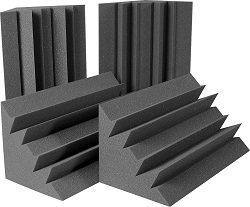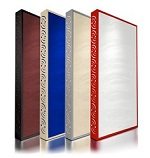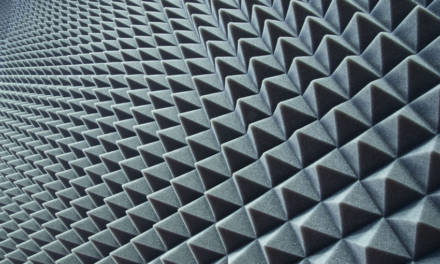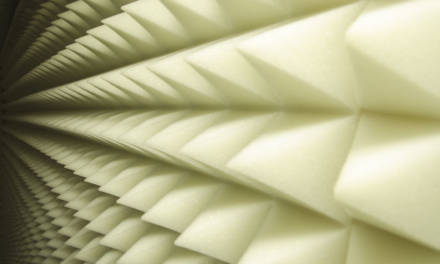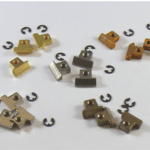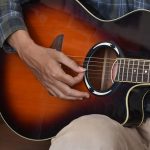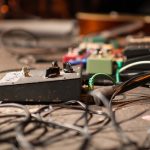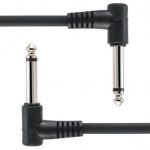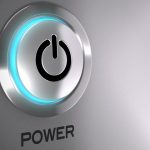Any links on this page that lead to products on Amazon are affiliate links and I earn a commission if you make a purchase. Thanks in advance for your support!
3 Best Bass Traps For Home Music Recording Studios
Bass traps are one of three types of acoustic wall treatment products. They are designed to correct issues with low frequencies which are common in recording studios. Learn how they work and discover the three best bass traps for your home studio.
Do your mixes sound thin and lifeless?
Are your mixes usually bass-heavy and muddy?
For home studios, getting the low-end right is the greatest challenge to creating fantastic sounding mixes.
Aside from having professional-quality music gear, the solution comes from the proper use of acoustic sound treatments.
Unless your studio is blessed with excellent acoustics right off the bat (and most are not!) then acoustic sound treatments are the only way to enhance the sound of your recordings and allow you to create well-balanced mixes.
For controlling low frequencies, the most effective products you can use are bass traps.
For controlling low frequencies, the most effective products you can use are bass traps.
In the first article in this series, I covered the basics of soundproofing for recording studios. That article focused on ways to keep sound OUT of your studio.
The second article, Acoustics 101: Acoustic Treatment Guide For Home Recording Studios, will help you determine what you need to do to make your studio sound better.
If you are new to soundproofing or studio acoustics, I’d recommend you start with those two articles before this one.
A third article discussed the two primary acoustic wall treatments – acoustic panels and diffusers – that help solve common problems like flutter echo, first reflections, comb filtering, and excess reverberation.
We’re now going to move on to the final part of the acoustic treatment puzzle: bass traps. Let’s start!
3 Types Of Acoustic Treatments
As you learned in my previous Acoustics 101: Acoustic Treatment Guide For Home Recording Studios post, there are three basic types of acoustic treatments:
- Acoustic panels
- Diffusers
- Bass traps
Let’s go into detail about acoustic panels and diffusers, and then give you some product recommendations.
Bass traps are covered in this separate article: 3 Best Bass Traps For Home Music Recording Studios.
What Are Bass Traps?
Bass traps are acoustic sound products made either of specialized acoustic foam or fiberglass insulation and are designed to absorb low frequencies.
How Bass Traps Work
Bass traps are designed to reduce or eliminate room modes, room nodes and standing waves that cause havoc on mixes.
They help solve one of the biggest problems all studios face:
… Uneven bass response
Room modes and standing waves affect your room by making some bass notes drastically stand out and others to virtually disappear.
This makes it very challenging to mix tracks and get the low-end right.
Most mixes that come out of acoustically untreated studios either have too much bass, making them sound boomy and muddy, or have too little bass that makes mixes sound thin and wimpy.
Now you should understand why professional studio mixes sound drastically better than amateur mixes – pro studios use proper sound control products that provide an acoustically accurate recording and mixing environment.
Bass Trap Science
The physical science behind sound waves is quite interesting.
Low-frequency sound waves are huge! The low E string on an electric bass has a frequency of 41.2 Hz. In wavelength terms, that E is 27.425 feet long!
In a small studio, it is easy for low frequencies many feet long to build up and bounce between walls. In untreated studios, they have nowhere to go and nothing to absorb the sound energy.
It takes mass and size to stop low-frequencies. Most bass traps are 4” to 6” thick and are either made of special foam or filled with insulation that acts as an effective sound absorber.
As an added benefit, due to their mass and size, they also provide some degree of absorption and diffusion. You thus save a bit by requiring less sound absorber panels or diffusers for your studio.
How To Place BassTraps In Your Studio
Bass traps are placed in corners of a room, and also along areas where the walls meet the ceiling.
The following video explains how to place bass traps in a studio.
How Many Bass Traps Do I Need?
The number of bass traps you need can only be determined by doing an acoustics analysis of your room.
Free Room Acoustics Analysis!
Auralex, Ultimate Acoustics, and ATS Acoustics, three leading acoustic sound product makers, offer free room acoustics analyzer programs. You can use them to determine how much sound treatment you need for your studio, their layout in your studio, plus tips on where to place everything.
Of course, all three companies want you to purchase their products once they provide their analysis, but you are under no obligation to do so.
Auralex offers two excellent free tools to help you evaluate your studio in more detail:
- Room Layout xXpress – an automated studio room layout app that is designed to give instant recommendations for small rooms.
- Auralex Free Studio Evaluation Service – a free personalized analysis of your room with recommendations of specific products and where to place them. This service is the most comprehensive and you get the ability to ask questions specific to your situation. Highly recommended!
ATS Acoustics Free Online Room Acoustics Analysis
ATS provides a free online room acoustics analysis. You provide your room’s dimensions and surface info, and they determine how much acoustic treatment is needed for your room.
Ultimate Acoustics’ Room Analysis App
This free iOS app (available in the Apple Store) will help you determine the right amount of acoustic treatment you need for your studio.
Bass Trap Product Recommendations
2-Pack:
Check price:
Amazon | Guitar Center
4-Pack:
Check price:
Amazon | Guitar Center
8-Pack:
Check price:
Amazon | Guitar Center
Auralex is a leading manufacturer of acoustic sound products. Their LENRD bass trap, which stands for Low-End Node Reduction Device, is widely used in studios around the world.
I have some in my studio on the back wall.
Each panel is 12” X 12” X 24”, providing 2 linear feet of absorption.
They are available only in Charcoal color.
The LENRD bass traps provide very effective absorption down to 63Hz with an NRC (Noise Reduction Coefficient) rating of 1.50.
Check price: Ready Acoustics
Only sold by the manufacturer.
I purchased a 6-piece set of these in addition to a complete set of Auralex products. My studio had some pretty bad bass response issues, and I needed quite a few heavy-duty bass traps.
Each bass trap is 48” X 24” X 4”. They are filled with 4” of Owens Corning 703 fiberglass insulation which is the gold standard for low-frequency reduction.
Because of their size, not only are they effective at fixing bass issues, but also absorbing slap echoes, comb filtering, and 1st reflections in the mid and high-frequency ranges.
You can purchase them with 7 different frame colors and 8 different fabric colors.
1 Pair:
Check price:
Amazon | Guitar Center
2 Pairs:
Check price:
Amazon | Guitar Center
The UA-BTBG bass traps have a beveled design, and are 24” X 12” X 8.5”. They have about 9 inches of foam at their apex which provides enough thickness to dampen bass frequencies and room modes.
They are only available in Charcoal color.
Included are adhesive squares for applying them to the corners of your room.
The main downside of these corner bass traps is that they are made of 100% foam, not fiberglass insulation. While this makes them a more affordable solution, the tradeoff is less effectiveness at reducing low-frequency issues that insulation-filled bass traps.
Conclusion
Bass traps, along with acoustic panels and diffusers, are the three acoustic sound control products needed to treat a studio space.
You’ve learned what bass traps are and how they are used in recording studios.
You’ve also discovered some free resources to get a detailed analysis of your studio to determine the amount of bass traps you need.
My bass trap recommendations should help you choose the best products to control low frequencies in your studio and make it sound great!
As always, please leave comments and/or questions below!


